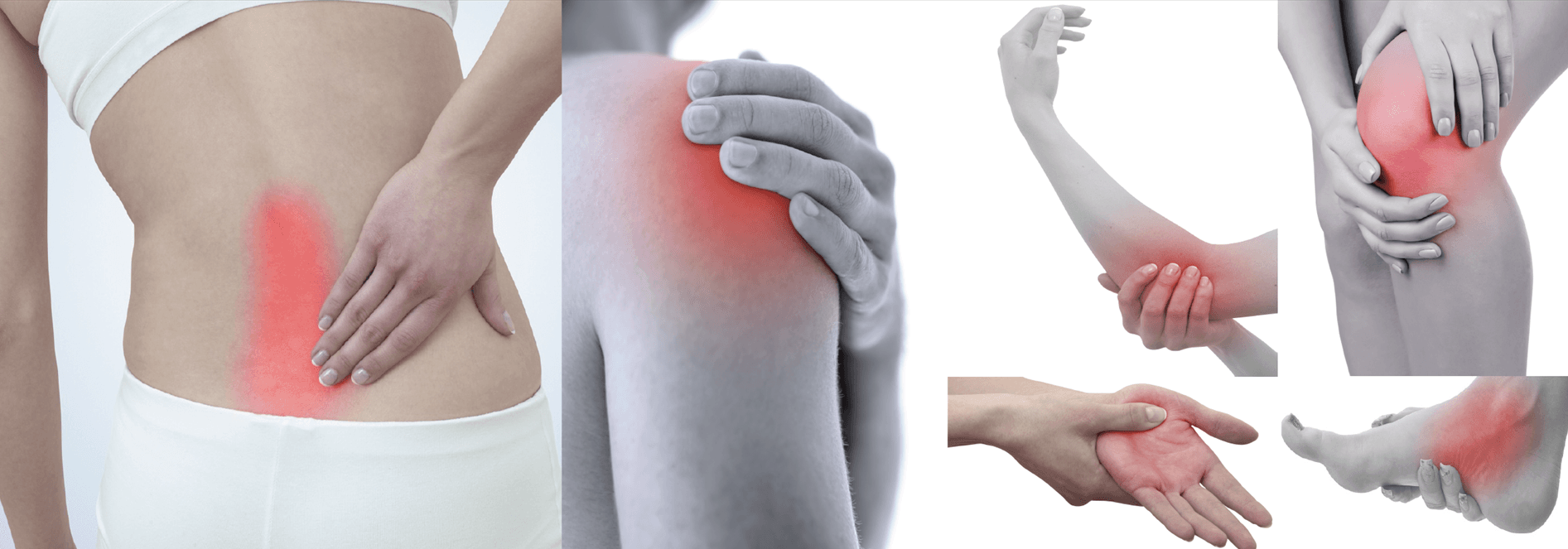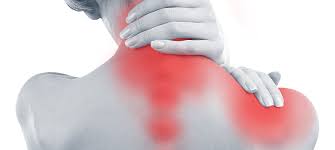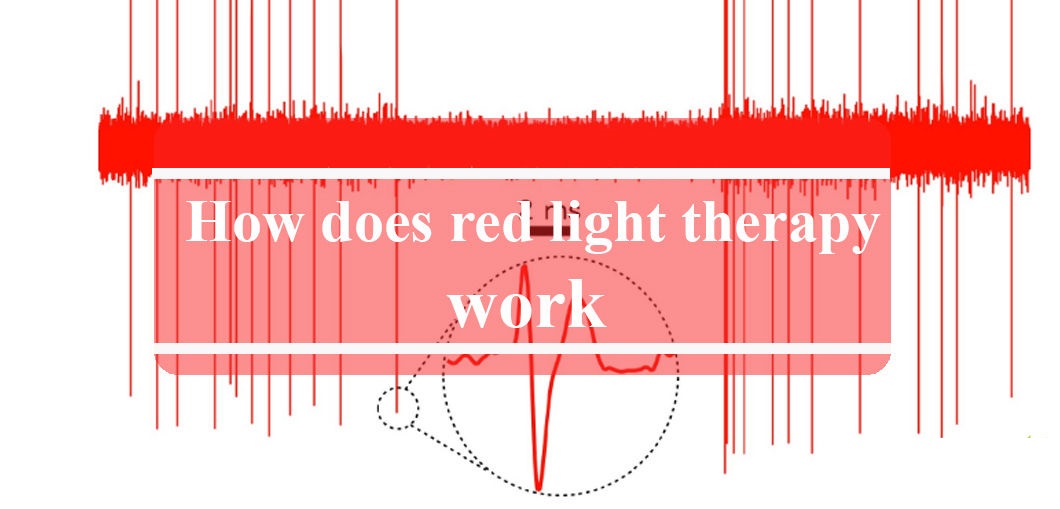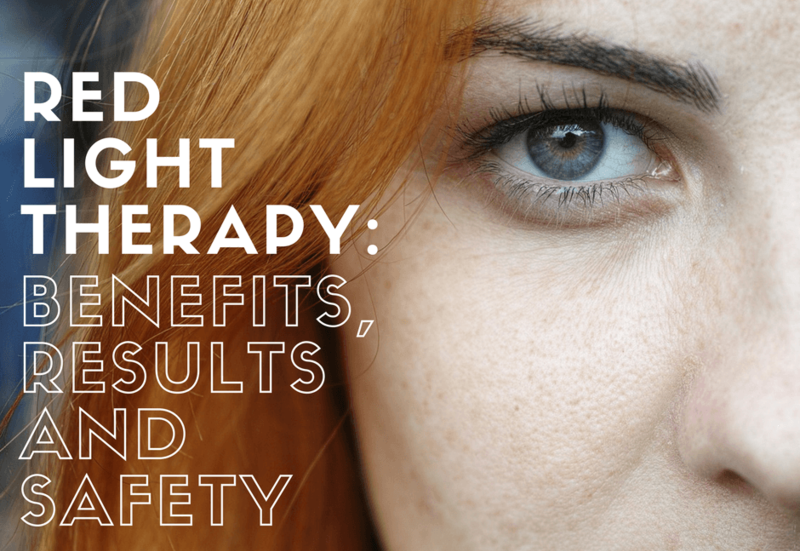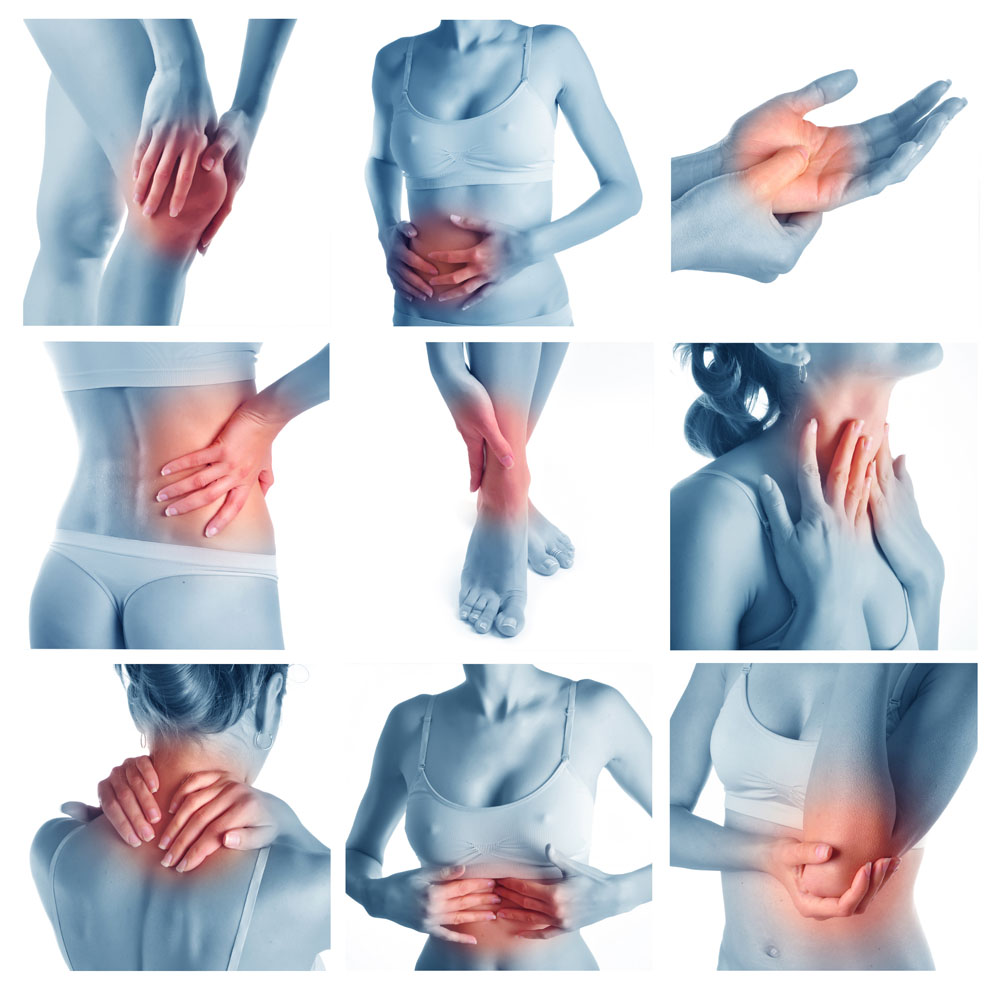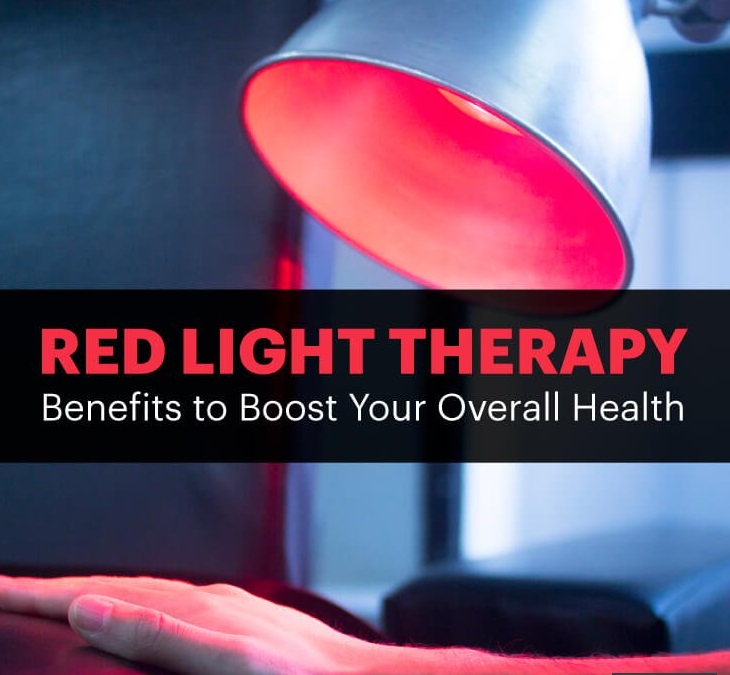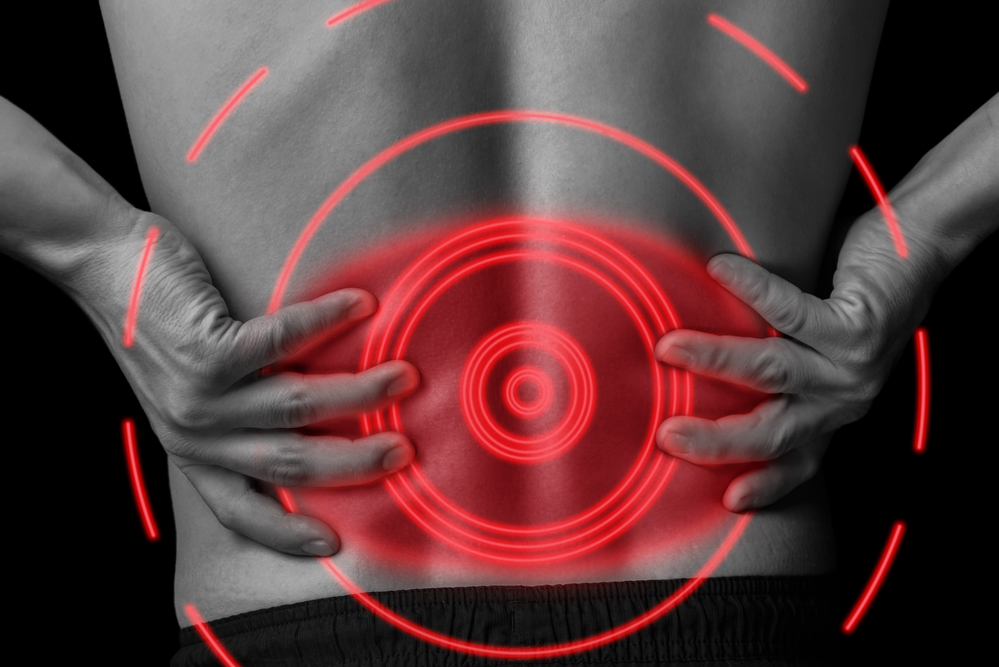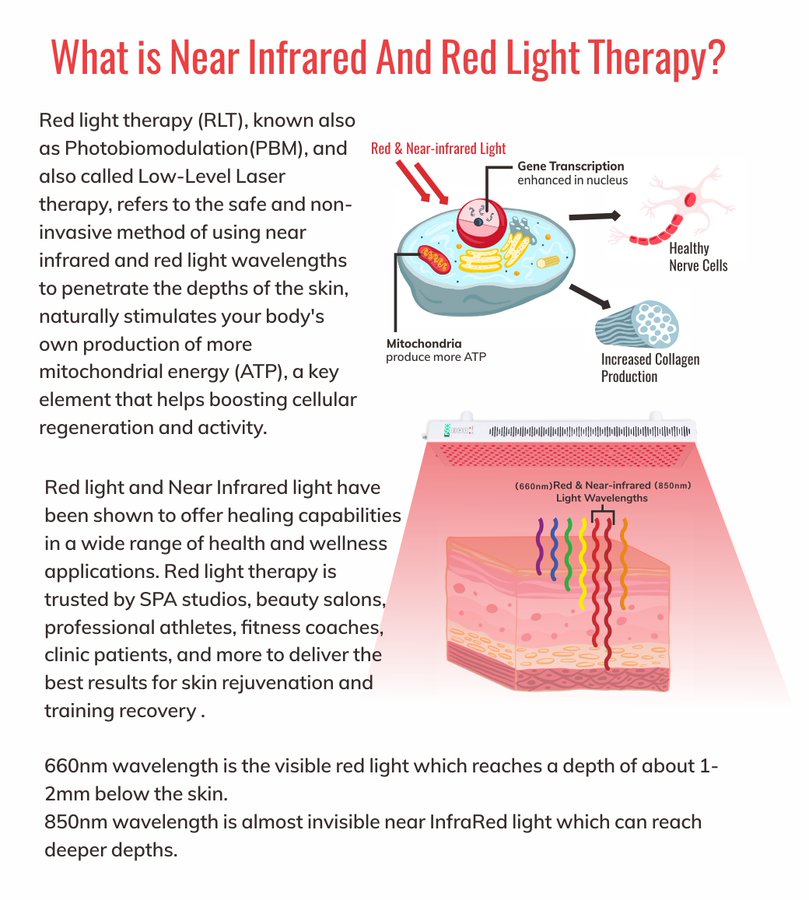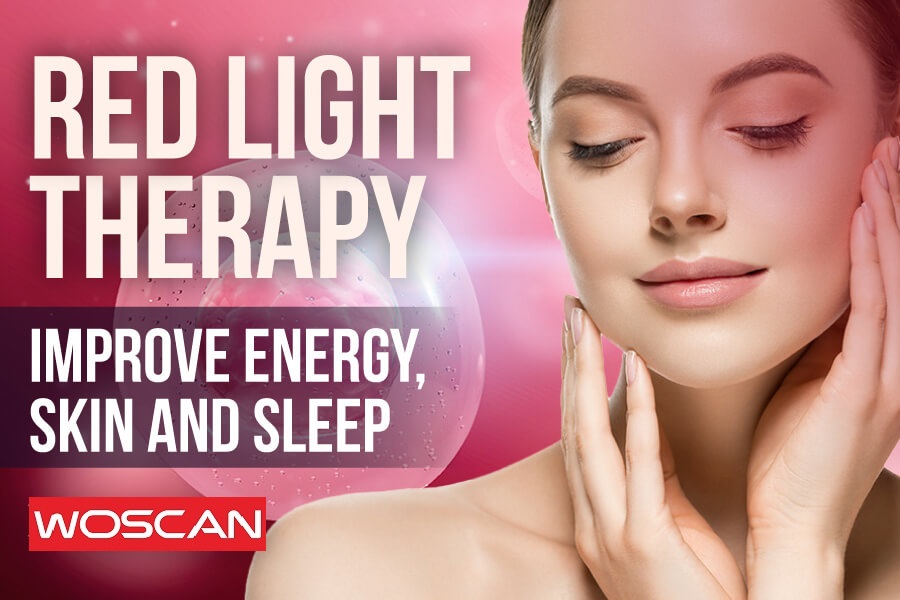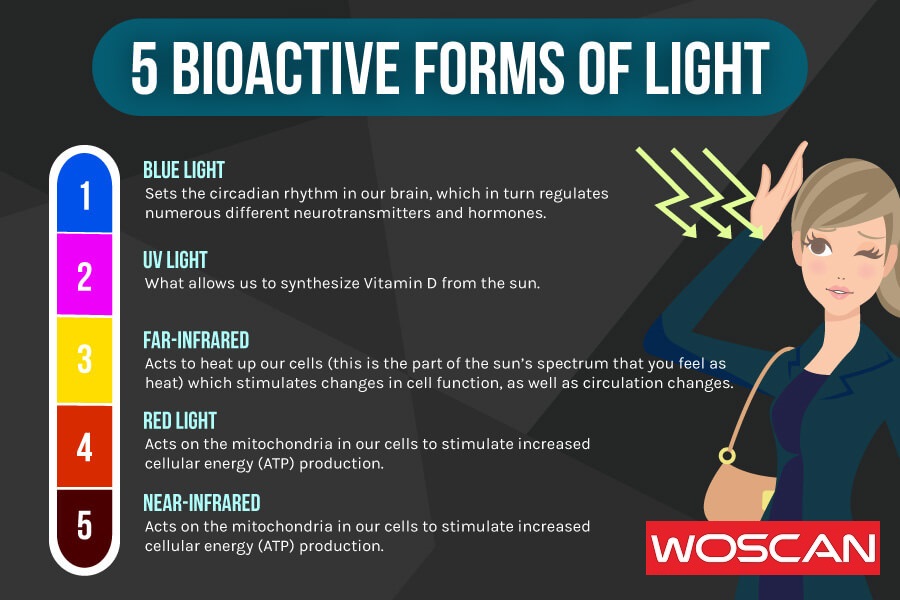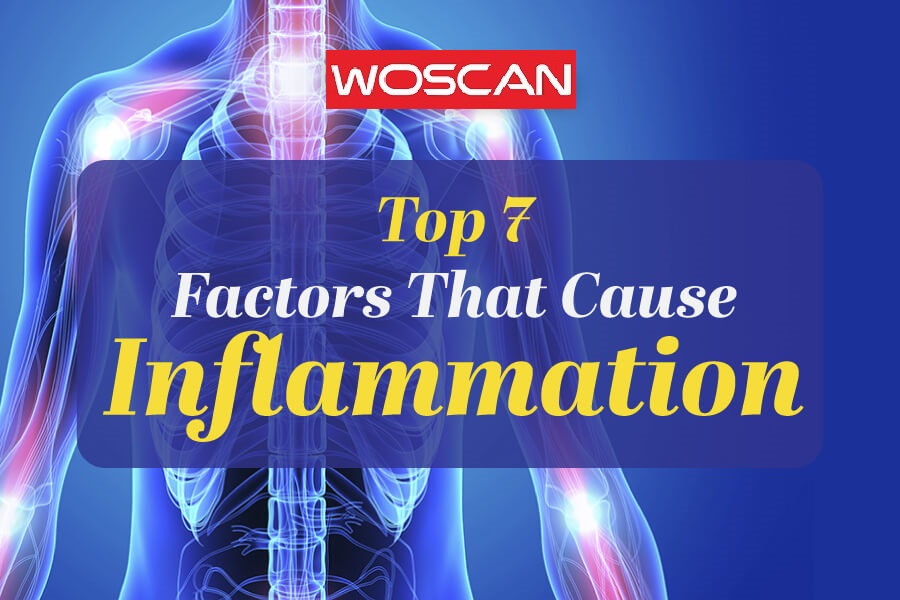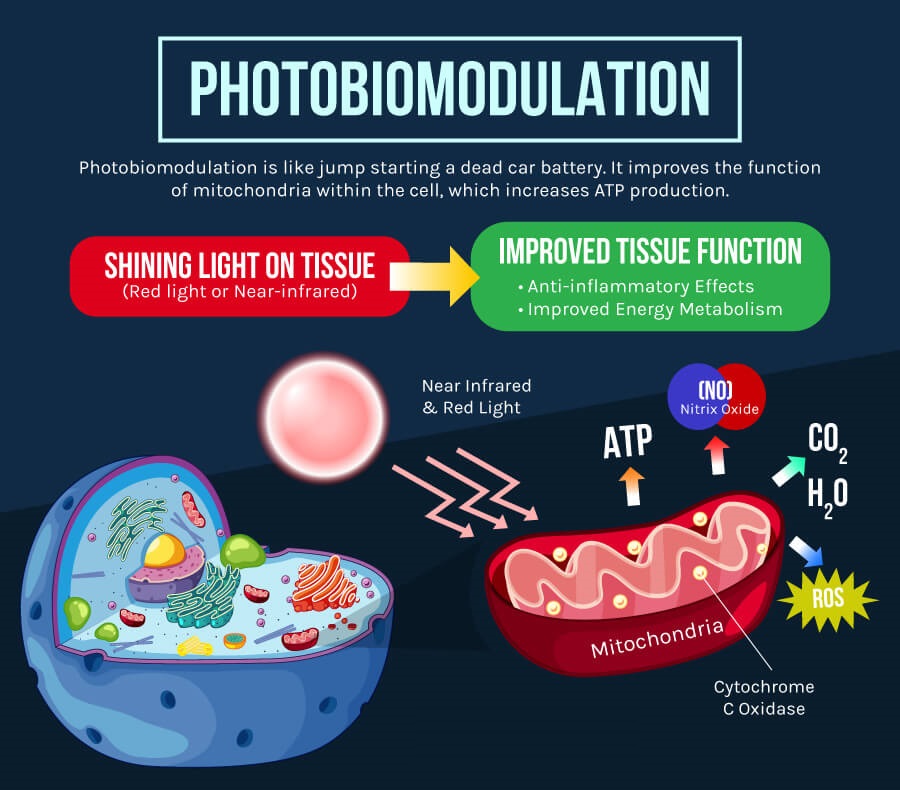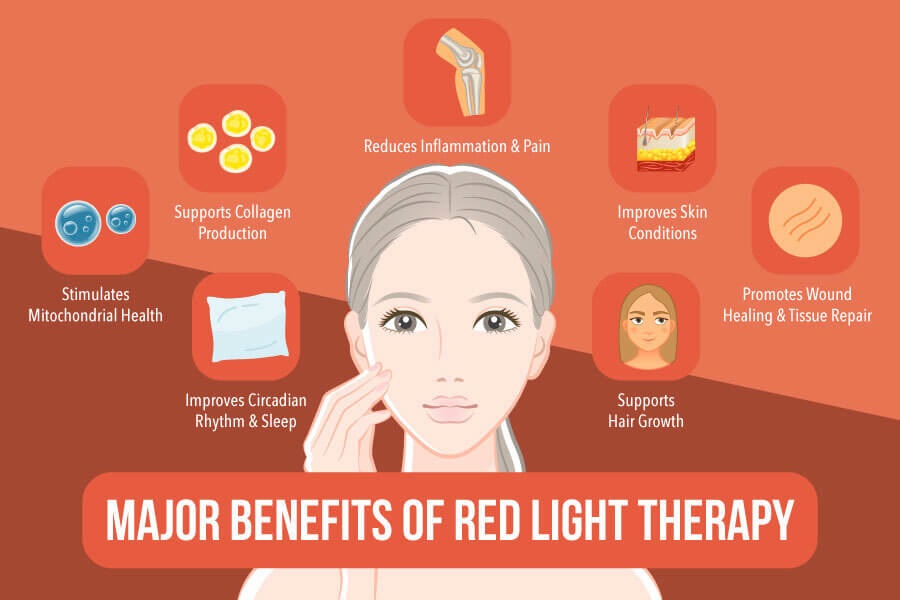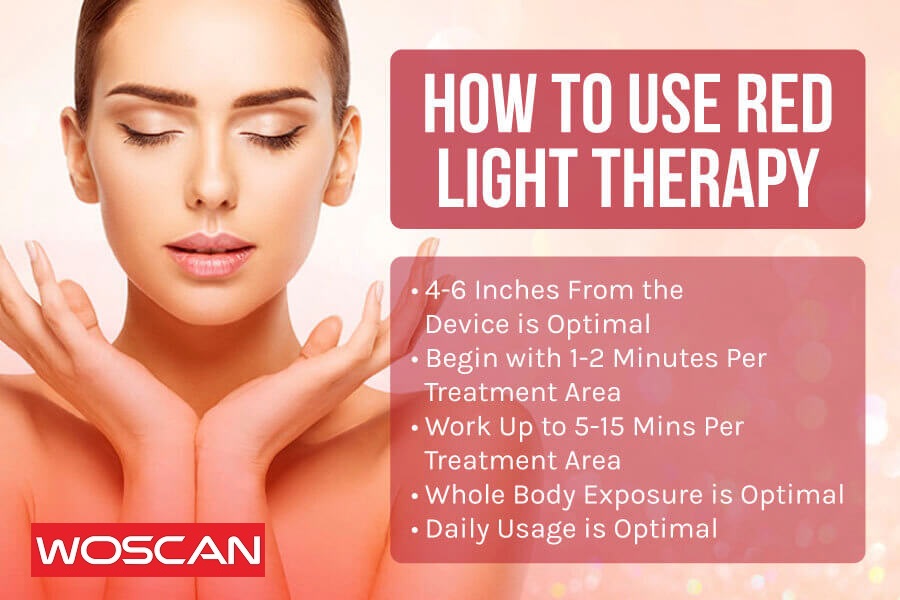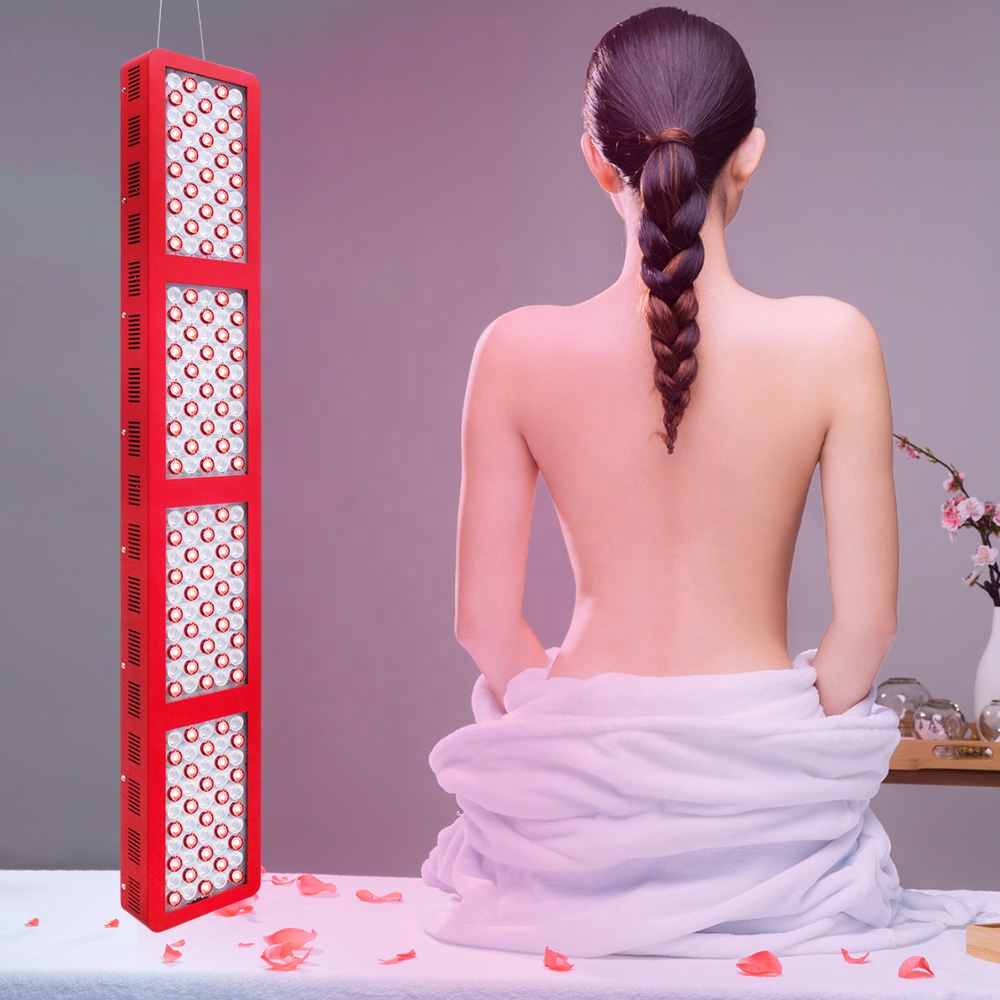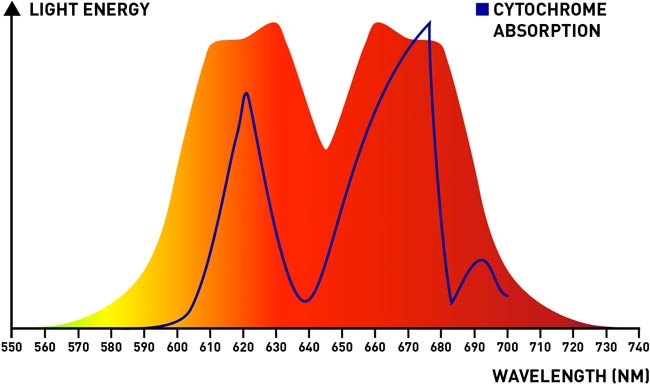
Red light therapy (RLT) is a controversial therapeutic technique that uses red low-level wavelengths of light to treat skin issues, such as wrinkles, scars, and persistent wounds, among other conditions.
In the early 1990s, RLT was used by scientists to help grow plants in space. The scientists found that the intense light from red light-emitting diodes (LEDs) helped promote growth and photosynthesis of plant cells.
Red light was then studied for its potential application in medicine, more specifically to find out if RLT could increase energy inside human cells. The researchers hoped that RLT could be an effective way to treat the muscle atrophy, slow wound healing, and bone density issues caused by weightlessness during space travel.
You may have heard of red light therapy (RLT) by its other names, which include:
- photobiomodulation (PBM)
- low level light therapy (LLLT)
- soft laser therapy
- cold laser therapy
- biostimulation
- photonic stimulation
- low-power laser therapy (LPLT)
When RLT is used with photosensitizing medications, it’s referred to as photodynamic therapy. In this type of therapy, the light only serves as an activating agent for the medication.
There are many different types of red light therapy. Red light beds found at salons are said to help reduce cosmetic skin issues, like stretch marks and wrinkles. Red light therapy used in an medical office setting may be used to treat more serious conditions, like psoriasis, slow-healing wounds, and even the side effects of chemotherapy.
While there’s a fair amount of evidence to show that RLT may be a promising treatment for certain conditions, there’s still a lot to learn about how it works, too.


